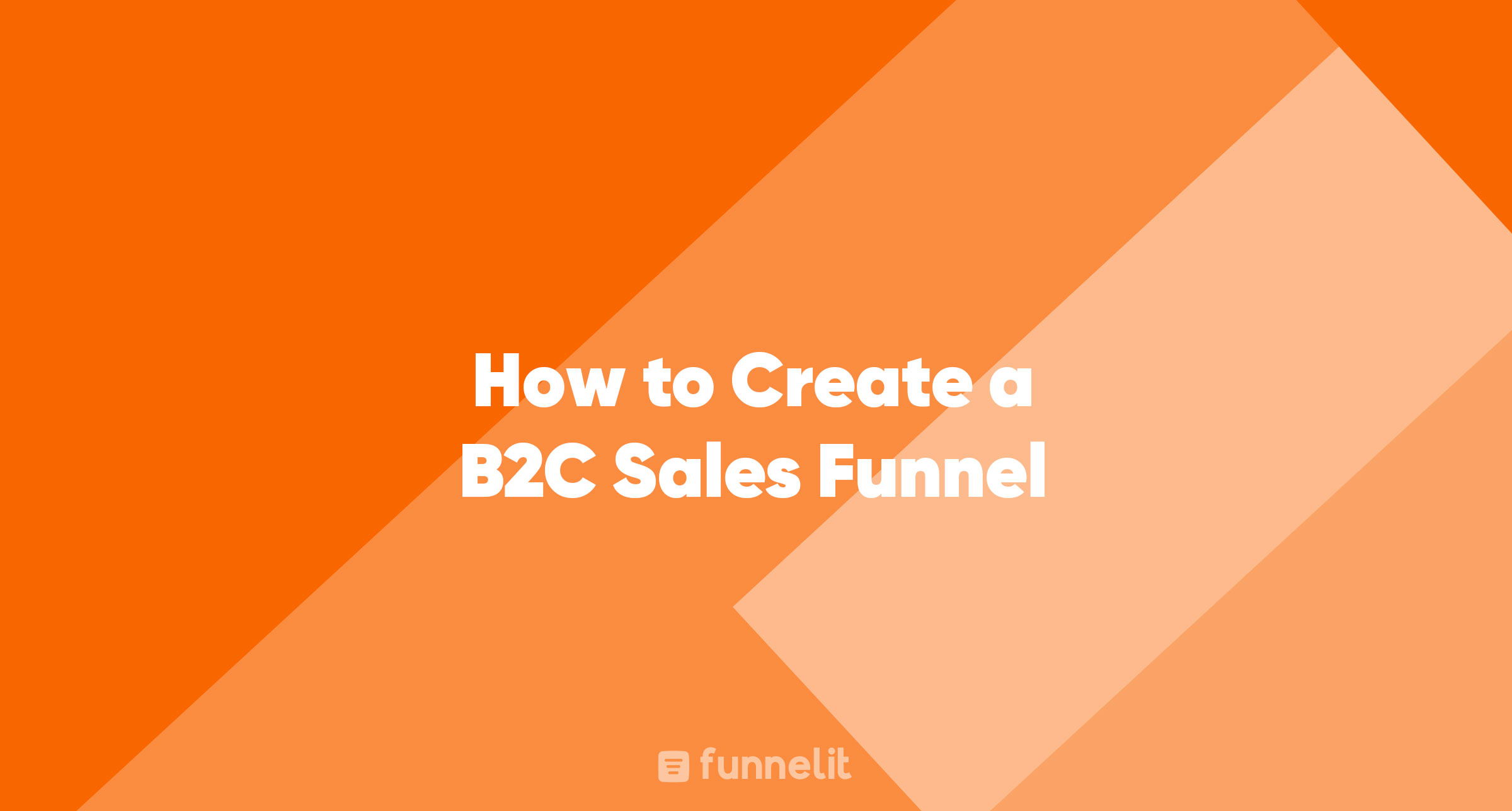In the fast-paced world of business-to-consumer (B2C) marketing, how can you ensure your brand stands out and consistently attracts customers? One strategy that many successful companies employ is the use of a B2C sales funnel. But what exactly is a B2C sales funnel and how can you create one to drive your sales on autopilot? Let's delve into these questions.
Understanding the B2C Sales Funnel
The B2C sales funnel is a strategic model designed to guide potential customers from the initial awareness of your brand to the final purchase. It's a path that customers traverse, starting as leads and ending up as loyal customers. This model is divided into several stages, each requiring a different marketing approach. Understanding these stages is key to crafting a high-performing B2C sales funnel.
Stage 1: Awareness (Top of the Funnel)
The first stage of the B2C sales funnel is the awareness stage. At this point, potential customers become aware of your brand and what you offer. This is achieved through various marketing strategies such as social media marketing, search engine optimization (SEO), content marketing, and pay-per-click advertising. The primary goal here is to reach as many potential customers as possible and spark interest in your brand.
Stage 2: Consideration (Middle of the Funnel)
Once potential customers are aware of your brand, they move into the consideration stage. Here, consumers actively consider whether your product or service meets their needs. This is where you need to convince them that your offer is worth their time and money. You can achieve this by providing more detailed information about your products or services, sharing customer testimonials, offering free trials, and more.
Stage 3: Conversion (Middle of the Funnel)
The next stage is the conversion stage. This is where leads turn into actual customers. The focus here is on making the purchasing process as seamless as possible. This could involve optimizing your website for conversions, offering various payment options, and providing excellent customer service. The goal is to make it easy for customers to complete their purchase and start enjoying your product or service.
Stage 4: Loyalty (Bottom of the Funnel)
After making a purchase, the customer enters the loyalty stage. The goal here is to build a strong relationship with the customer, encouraging repeat purchases and fostering customer loyalty. This can be achieved through after-sales service, loyalty programs, regular communication, and more.
Stage 5: Advocacy (Bottom of the Funnel)
The final stage of the B2C sales funnel is the advocacy stage. Here, satisfied customers become advocates for your brand, promoting your products or services to their network. This might involve writing reviews, making referrals, sharing your content on social media, and more. The goal is to turn your customers into a powerful marketing force for your brand.
Building Your B2C Sales Funnel: Step-by-Step Guide
Creating a B2C sales funnel might seem like a daunting task, but it doesn't have to be. Here's a step-by-step guide to help you get started:
Step 1: Define Your Target Audience
The first step in creating a B2C sales funnel is to define your target audience. Who are the people most likely to be interested in your product or service? What are their demographics, interests, and behaviors? This information will help you tailor your marketing strategies to attract and engage your target audience effectively.
Step 2: Create Awareness
Once you've defined your target audience, the next step is to create awareness about your brand. This involves using various marketing strategies to reach out to potential customers and introduce your brand to them. Remember, the goal here is not just to reach as many people as possible, but to reach the right people - those who are likely to be interested in what you offer.
Step 3: Engage Your Audience
After creating awareness, you need to engage your audience. This involves providing valuable content that addresses their needs, interests, and pain points. The goal here is to build a relationship with your audience, positioning your brand as a trusted authority in your industry.
Step 4: Convert Leads into Customers
The next step is to convert your leads into customers. This involves guiding your prospects through the buying process, making it easy for them to make a purchase. You can do this by offering a seamless online shopping experience, providing multiple payment options, and offering excellent customer service.
Step 5: Foster Customer Loyalty
After a customer makes a purchase, your job isn't over. You need to foster customer loyalty, encouraging customers to make repeat purchases. This can be achieved through excellent after-sales service, loyalty programs, regular communication, and more.
Step 6: Encourage Advocacy
Finally, you want to turn your loyal customers into advocates for your brand. You can do this by encouraging customers to leave reviews, refer friends, share your content, and more. Remember, word-of-mouth marketing is one of the most powerful forms of advertising, so don't underestimate the power of customer advocacy.
Key Takeaways: Building a Powerful B2C Sales Funnel
Building a B2C sales funnel is a critical component of any successful marketing strategy. It allows you to guide potential customers through the buying process, transforming them from leads into loyal customers and advocates for your brand. By understanding the different stages of the B2C sales funnel and implementing strategies tailored to each stage, you can create a powerful marketing system that drives sales and boosts your bottom line.
Remember, the B2C sales funnel isn't just a one-time strategy. It's a continuous process of attracting, engaging, converting, and retaining customers. By continually optimizing your funnel based on customer feedback and performance data, you can ensure your marketing efforts deliver the best possible results.
